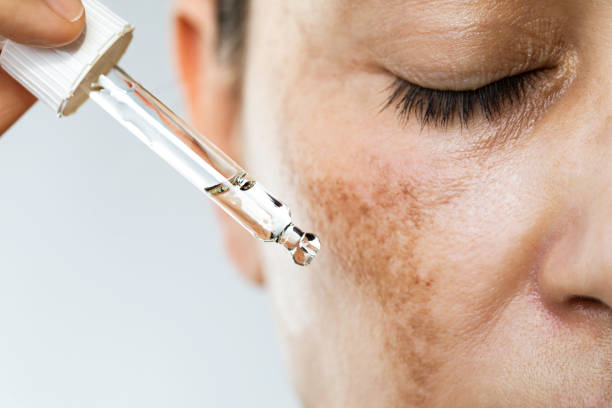Melanin, the natural pigment that colors our skin, hair, and eyes, is far more than just a biological substance. It holds a fascinating position at the intersection of science, beauty, economics, and even social discourse. In this article, we unpack the question: “How Much Is Melanin Worth?” This query does not merely seek a monetary valuation; it opens a discussion about the significance of melanin in various industries and its impact on our lives.
Our deep dive into the subject is backed by a wealth of knowledge rooted in scientific research, economic trends, and the burgeoning cosmetic and pharmaceutical markets where melanin’s value is most prominently on display. We’ll explore the factors that drive the demand for melanin, the complexities of its extraction and synthesis, and why this extraordinary biomolecule can command a premium in various marketplaces.
The worth of melanin extends beyond its chemical properties; it embodies a cultural richness that resonates with identity and diversity. By dissecting how melanin is priced and why it matters, we aim to provide a nuanced perspective that reflects both its tangible and intangible aspects.
Prepare to be intrigued by the science, surprised by the economics, and enlightened by the cultural relevance of melanin as we journey through the story of this remarkable pigment’s worth. Whether you’re a scientist, an entrepreneur, or simply someone fascinated by the marvels of nature, this article promises to shed light on the myriad dimensions of melanin’s value. Join us as we explore the multifaceted worth of melanin and what it reveals about our world.
Contents
Unveiling the Science
What is Melanin?
Melanin is a complex polymer and pigment that gives human skin, hair, and eyes their color. It is produced by cells called melanocytes. Melanin is made up of the amino acid tyrosine and goes through a multistep process within melanocytes to be produced.
There are two main types of melanin in humans:
- Eumelanin: brown and black pigments
- Pheomelanin: reddish-brown pigments
Eumelanin helps protect the skin from ultraviolet (UV) damage from the sun. Pheomelanin does not protect as much from UV radiation. The ratio and amount of eumelanin and pheomelanin produce the variations in hair and skin color.
Melanin also is present in the brain in neurons. This form is called neuromelanin and may play a role in brain function.
Genetics and Melanin Production
The amount and type of melanin produced is primarily determined by genetics. There are many genes that regulate melanin production and lead to differences in skin pigmentation across ethnicities. Some key genes involved include:
- MC1R
- SLC24A5
- TYR
- OCA2
These genes influence enzymes needed for melanin synthesis and melanosome development. Variations in these genes contribute to diversity in skin tone.
Sun Exposure and Melanin
When skin is exposed to UV radiation from sunlight, this triggers increased production of melanin. The melanin acts as a natural sunscreen to absorb the UV rays and protect the DNA in skin cells from damage. This results in tanning of the skin.
While some sun exposure allows beneficial melanin production, excessive exposure without protection leads to sunburns and raises melanoma risk. Finding a balance is key.
The Many Functions of Melanin
Protection from UV Rays
The most well-known role of melanin is protecting skin from UV radiation. As a pigment, it absorbs UV rays and dissipates the energy as heat. This shields the nuclei of skin cells from UV photodamage.
Skin Coloration
Melanin is responsible for natural variation in human skin, hair, and eye color. Higher concentrations of melanin appear darker, while lower levels appear lighter. Differences in melanin account for the broad spectrum of natural skin tones.
Other Potential Benefits
Melanin may also have other protective properties that are still being researched:
- Wound healing: Melanin assists in forming new blood vessels and skin during healing.
- Anti-aging: Melanin may act as an antioxidant and protect skin from aging.
- Vision health: The melanin in eyes helps protect them from UV and free radicals.
Regulation of Melanin Production

Hormones
Hormones like MSH and ACTH stimulate melanin production. Estrogen and progesterone also impact melanin levels and can lead to hyperpigmentation.
Other Factors
Many other factors influence melanin formation, like:
- Genetics
- Inflammation or trauma to skin
- Sun exposure
- Skin disorders
- Aging
Melanin and Health
Melanoma
Melanoma is a type of skin cancer that arises from melanocytes. Even though melanin has protective properties against UV radiation, excessive sun exposure can still override those defenses and cause DNA damage that results in melanoma.
Melanin Deficiency Disorders
Lack of melanin causes conditions like:
- Albinism: Lack of melanin production causes little to no pigmentation in skin, hair, and eyes.
- Vitiligo: An autoimmune disease where melanocytes are attacked, causing white patches to appear on the skin.
Both can increase sensitivity to sun exposure.
How Much Is Melanin Worth?
Melanin is valued between $450 and $550 per gram, making it more valuable than gold, which is currently worth $61.02. This means that the natural melanin found in black people is estimated to be eight times more valuable than gold, with the skin pigmentation in a typical black person’s body being worth over $40 million.
The Value of Melanin
Scientific vs. Commercial Value
While melanin clearly has scientific value for health, claims that it is commercially worth more than gold are exaggerated. Much more research is required to develop marketable health and cosmetic applications.
Extraction Methods
- Traditionally, melanin was obtained from the ink sacs of animals like cuttlefish and squid.
- Synthetic melanin can now be produced in labs, allowing more controlled production.
Social and Cultural Significance

Historical Perspectives on Skin Color
Throughout history, cultures have valued lighter and darker skin tones differently. In many societies, lighter skin was associated with higher class and status. However, some ancient societies viewed dark skin positively as well. Ideals have varied greatly across time and geography.
Colorism and Its Impact
Colorism refers to discrimination based on skin tone, where even within ethnic groups, lighter skin is seen as more desirable. This can negatively impact self-esteem, education, employment, and more for individuals with darker skin.
Melanin and Racial Identity
Since melanin so directly contributes to skin tone, it has become intertwined with racial identity politics. The social experience of having high vs. low melanin levels has impacted perceptions of race.
Ethical Considerations
Profiting from a Biological Feature
Some argue attempting to profit from melanin production exploits a biological feature people have no control over. Others contend it could value melanin’s protective strengths. This debate is still ongoing.
The Future of Melanin Research
Specific Areas of Research
Some key areas of active melanin research:
- Wound healing
- Anti-aging skin care
- Sunscreen development
- Vision protection
- Antioxidant properties
Further understanding the basic biology and manipulating melanin may yield new innovations.
Conclusion: How Much Is Melanin Worth?
By understanding how much is melanin worth and how it is produced, used and increased in the body, we can gain a better appreciation for the importance of this powerful pigmenting molecule. Not only can it help protect us from UV rays, but its various applications also make it an extremely valuable resource for medical professionals, companies and individuals alike. With this knowledge at our disposal, we can all make informed decisions when using or purchasing products that contain melanin.

Trayce served as a grassroots leader and activist in Texas as President of Dallas and Texas Eagle Forum.
Trayce is Mom Caucus Member, Texas Conservative Mamas, Texas Conservative Grassroots Coalition Leader, and Grassroots America Champion of Freedom Honoree.
She currently serves as the Eagle Forum National Issues Chair on Human Trafficking.
Trayce received a Bachelor’s Degree in Marketing from Texas A&M
Currently, she homeschools her youngest child age 13 and graduated her six oldest children, ages 31 to 19.







